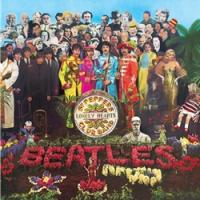I went into HMV's store here in Dublin yesterday and was delighted to see all The Beatles Mono LPs in the store, my elation didn't last long unfortunately, because when I got close to them the price knocked me back on my heels.
Reading these reviews of The Beatles Mono LPs had me really excited, but now I am totally deflated! The reason: HMV are charging $44 dollars for a single LP.
I would expect to that price for a US import but not for an EU pressing. It is unheard of, the recent Led Zeppelin reissues only cost $23 each.
The record company has made their money ten times over on The Beatles, why go way over the top on these reissues?
I love vinyl, have stuck with vinyl through the CD era, put my money where my mouth is, but this is just too much to take!
Thanks for the wonderful information on all these releases Michael! You have put a lot of effort into bringing us what to expect from these releases but I am going to have to pass because of the prices!
James, Dublin, Ireland




















